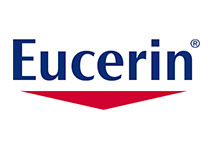Eucerin
Hair Care / Man Care / Skin Care / Sun Care / Toiletries
Many products that are available from pharmacies today such as ointments, creams, or special lotions for sensitive skin can trace their roots back to a single basic ingredient: Eucerin. The ointm...
Many products that are available from pharmacies today such as ointments, creams, or special lotions for sensitive skin can trace their roots back to a single basic ingredient: Eucerin. The ointment base produced using the emulsifying agent Eucerit enabled active ingredients in ointment form to be applied directly to the skin. The theoretical groundwork for this was laid by Dr. Isaac Lifschütz in 1898. After extensive tests, he applied for a patent for the new emulsifying agent, Eucerit, in 1900; this was granted after some delay in 1902. When mixed with mineral fats, the compound developed by Lifschütz, Eucerinum anhydricum, became a hydrophilic ointment base that could be stored indefinitely. The product's success started after Lifschütz sold his patent in 1911 to Beiersdorf and was working for the company as a chemist. Whereas NIVEA Creme, which was based on the emulsifying agent Eucerit, went on to a glittering career on the skin care market, the medicinal products Eucerinum anhydricum and Eucerinum cum Aqua remained purely pharmacy-only ointment bases. This changed in 1950 with the introduction of ph5 Eucerin, the "acid ointment". Although this, too, was marketed exclusively via pharmacies, it was a finished product created specifically for consumers with particularly sensitive skin. In 1977, the range was expanded to include products for the entire body. Then, in the mid-1990s, came the entry into the core skin care market, face care. A range of products for sensitive and damaged skin was launched under the "Eucerin" brand name and immediately landed a major success with the first clinically documented anti-wrinkle cream, "Q10 Active". Nevertheless, Beiersdorf made a conscious decision to continue selling the products via pharmacies, in order to ensure that consumers received competent advice. In the meantime, the Eucerin range comprises eight high-quality product lines offering consumers tailor-made solutions for all skin problems.Brand Details
Founder
Isaac Lifschütz
Brand Strategy
Market segment
Value for Money
Core business
Beauty
Targets
Men, Women
Eucerin Latest News
Eucerin on Nykaa
Eucerin is officially making it into the Indian beauty and wellness market by launching its products on Nykaa.
The financial data for this brand is limited.
Contact us for income statementOur team will check for the data and get back to you shortly.
